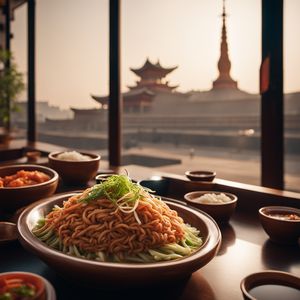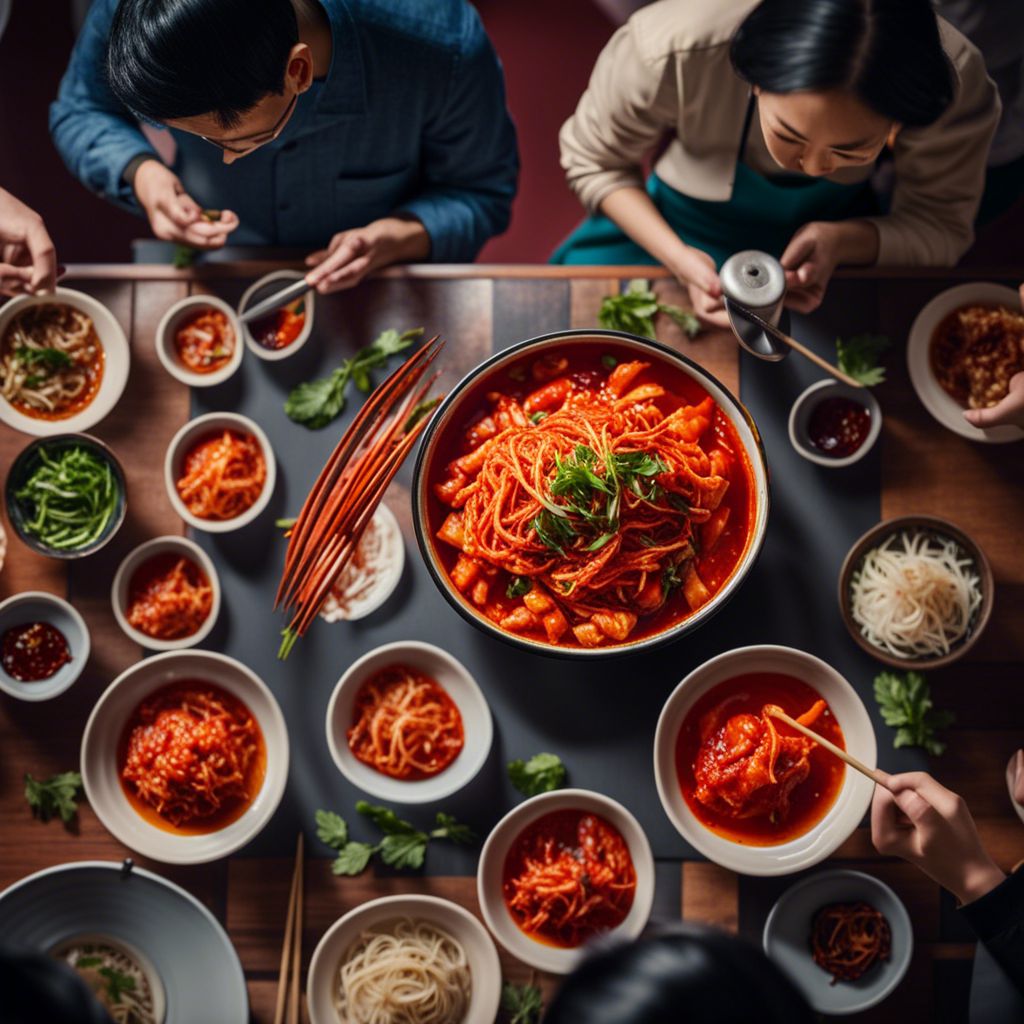
Dish
Kimchi
Kimchi is typically made with napa cabbage, radishes, scallions, and other vegetables, along with a spicy paste made from chili flakes, garlic, ginger, and fish sauce. The mixture is then left to ferment for several days or weeks, allowing the flavors to develop and the vegetables to become tender and slightly sour. The resulting kimchi is tangy, spicy, and slightly sour, with a crunchy texture that adds a nice contrast to other dishes. Kimchi is also rich in probiotics, which are beneficial for gut health.
Origins and history
Kimchi has been a part of Korean cuisine for centuries, and is believed to have originated during the Three Kingdoms period (57 BC – 668 AD). It was originally made with salted and fermented fish, but over time, vegetables such as cabbage and radishes were added to the mix. Kimchi has since become a staple in Korean cuisine, and is enjoyed both at home and in restaurants around the world.
Dietary considerations
Kimchi is vegan and gluten-free, but may contain high levels of sodium due to the fermentation process. It is also quite spicy, so it may not be suitable for those with sensitive palates or digestive issues. Some people may also be allergic to the fish sauce used in traditional kimchi recipes.
Variations
There are many variations of kimchi, with different combinations of vegetables and spices. Some recipes call for the addition of fruits such as pear or apple, while others use different types of chili flakes or fish sauce. Some versions of kimchi are also made with different types of cabbage or radishes, which gives them a unique flavor and texture.
Presentation and garnishing
Kimchi can be presented in a small bowl or jar, with the colorful vegetables and spices on display. It can be garnished with fresh herbs such as cilantro or parsley, or with a sprinkle of sesame seeds for added texture. To make it more visually appealing, you can arrange the vegetables in a decorative pattern or layer them in a clear glass jar.
Tips & Tricks
To make kimchi less spicy, you can reduce the amount of chili flakes used in the recipe. You can also adjust the fermentation time to suit your taste preferences. Kimchi can be stored in the refrigerator for up to a month, but should be consumed within a few days once opened.
Side-dishes
Kimchi is often served as a side dish alongside rice and other Korean dishes. It can also be used as a topping for sandwiches, burgers, and tacos, or as a garnish for soups and stews. Some people also enjoy eating kimchi on its own as a snack or appetizer.
Drink pairings
Kimchi pairs well with a variety of drinks, including beer, soju, and other Korean spirits. Its tangy and spicy flavor profile makes it a great complement to savory and salty dishes.
Delicious Kimchi recipes Browse all »

Kimchi Burger
Spicy Korean Twist: Kimchi Burger
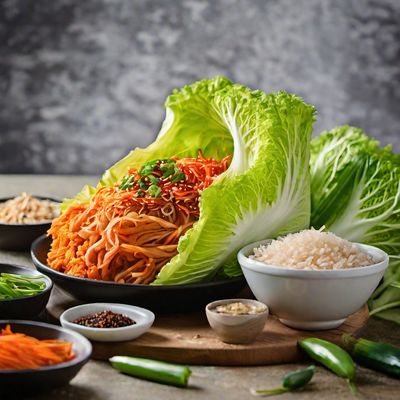
Thai-style Kimchi
Spicy and Tangy Thai Kimchi: A Fusion of Flavors

Taiwanese-style Kimchi
Taiwanese Spicy Fermented Cabbage Delight

Kimchi
Dutch-inspired Kimchi: A Spicy Twist on Traditional Fermented Cabbage
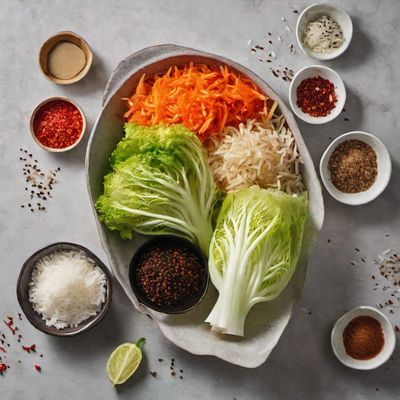
Sichuan-style Spicy Kimchi
Fiery Fermented Delight: Sichuan-style Spicy Kimchi
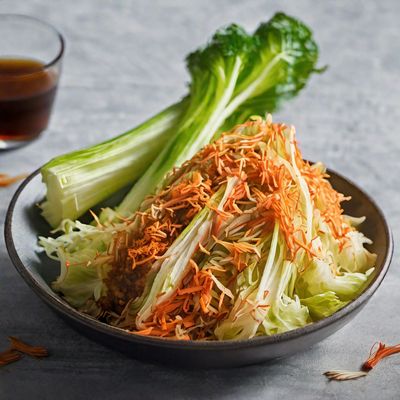
French-inspired Kimchi
Kimchi à la française: A Fusion of Korean and French Flavors
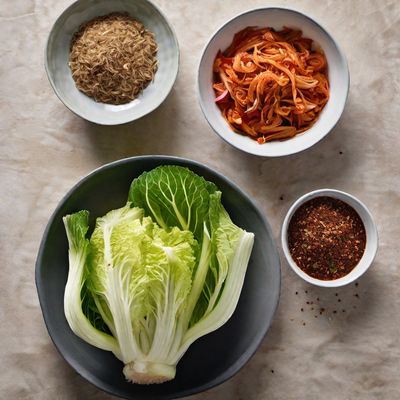
Moroccan-style Spiced Kimchi
Moroccan-inspired Kimchi with a Spicy Twist

Vegan Kimchi
Plant-Based Twist: Vegan Kimchi Bursting with Flavor
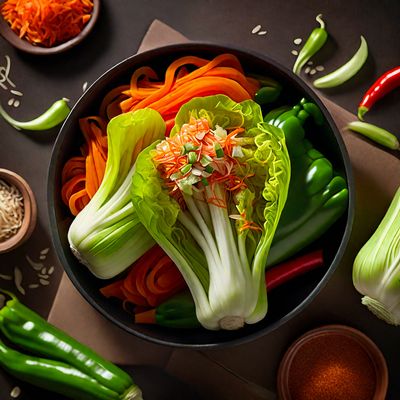
Kimchi with a New Mexican Twist
Spicy and Tangy Green Chile Kimchi

Japanese-style Kimchi
Umami-packed Kimchi with a Japanese Twist
More dishes from this category... Browse all »

Acar kuning
Malaysian cuisine

Atchara
Filipino cuisine
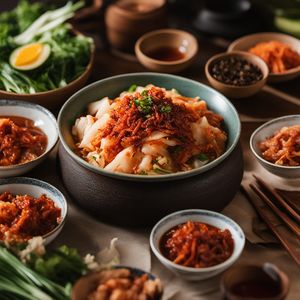
Baechu-kimchi
Korean cuisine

Baek kimchi
Korean cuisine

Beet Eggs
Jewish cuisine

Burong mangga
Filipino cuisine

Chilera
Ecuadorian cuisine

Chinese Pickles
Chinese cuisine
